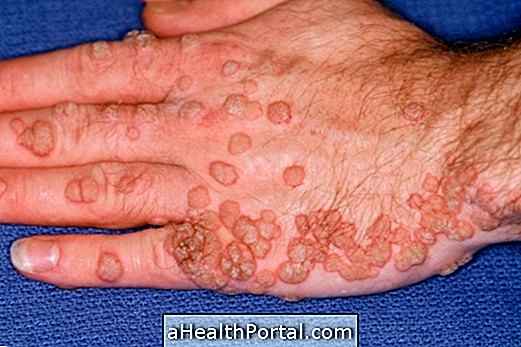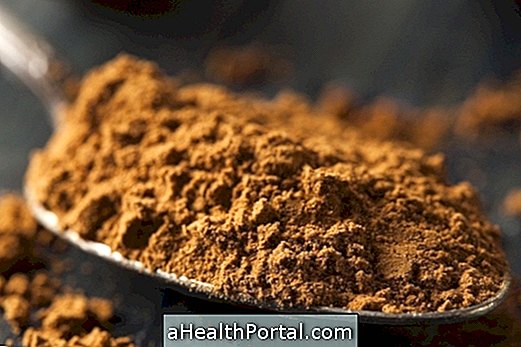Staphylococcus aureus, or S. aureus, is a gram-positive bacteria normally present in the skin and mucosa of people, especially the mouth and nose, without causing damage to the body. However, when the immune system is compromised or when there is a wound, this bacteria can proliferate and reach the bloodstream, causing sepsis, which corresponds to the generalized infection, and can lead to death. Understand sepsis, symptoms and how to treat.
This type of staphylococci is also very common in hospital environments, so it is important to avoid contact with critical patients in the hospital and keep the hands clean enough to avoid contact with this bacterium, since Staphylococcus aureus present in hospitals usually present resistance to several antibiotics, which makes your treatment difficult.
S. aureus infection can range from a simpler infection such as folliculitis, for example, to endocarditis, which is a more serious infection characterized by the presence of bacteria in the heart. This way, the symptoms can vary from redness in the skin, until muscular pains and hemorrhages.

Main symptoms
The symptoms of S. aureus infection depend on the form of infection, the location of the bacteria and the conditions of the patient, which may be:
- Pain, redness and swelling of the skin, when the bacteria proliferates in the skin, leading to the formation of abscesses and blisters;
- High fever, muscle aches, shortness of breath and severe headache, when the bacteria can enter the bloodstream, usually due to some injury or injury to the skin, and can spread to various organs;
- Nausea, abdominal pain, diarrhea, and vomiting may occur when bacteria enter the body through contaminated food.
Because it can be found naturally in the body, especially in the mouth and nose, it can be transmitted through direct contact, droplets from the air through coughs and sneezing, and through contaminated food or objects.
In addition, the bacteria can reach the bloodstream through wounds or needles, which is the most frequent form of infection in people who use injecting drugs or people with diabetes who use insulin.
Depending on the severity of the infection symptoms, it may be necessary for the person to be hospitalized and sometimes in isolation until the infection is treated.
Diseases caused by Staphylococcus aureus
Staphylococcus aureus may cause mild and simple infections to be treated or more serious infections, the main ones being:
- Folliculitis, which is characterized by the presence of small blisters with pus and redness on the skin caused by the proliferation of bacteria in the place. Understand what is and how to treat folliculitis;
- Infectious cellulitis, in which the S. aureus can penetrate the deeper layer of the skin, causing pain, swelling and intense redness of the skin. Learn all about infectious cellulitis;
- Septicemia, or septic shock, corresponds to a generalized infection characterized by the presence of bacteria in the bloodstream, which can reach several organs. Understand what it is, symptoms and how is the treatment of septic shock;
- Endocarditis, which is a disease that affects the heart valves due to the presence of bacteria in the heart. Learn more about bacterial endocarditis;
- Osteomyelitis, which is the infection of the bone caused by bacteria and that can happen by direct contamination of the bone through a deep cut, fracture or implant of a prosthesis, for example. See what osteomyelitis is and how to identify it;
- Pneumonia, which is a respiratory disease that leads to difficulty breathing and may be caused by lung involvement by bacteria. Know what the symptoms of pneumonia are;
- Toxic shock syndrome or scalded skin syndrome, which is a skin disease caused by the production of toxins by Staphylococcus aureus, causing skin peeling. Understand skin scald syndrome.
People who have compromised immune systems due to oncological, autoimmune or infectious diseases, have suffered burns or wounds, or have undergone surgical procedures are more likely to develop Staphylococcus aureus infections.
Therefore, it is important to wash hands thoroughly and take precautions in hospital settings to avoid infections by this bacteria, as well as consume foods that strengthen the immune system. Understand the importance of washing your hands to avoid disease and how to boost immunity through eating.

How is the diagnosis made?
The diagnosis is made from the isolation of the bacteria, which is done in a microbiology laboratory from a biological sample, which is requested by the physician according to the person's symptoms, such as urine, blood, saliva or wound secretion.
After the isolation of the bacterium is made the antibiogram to check the sensitivity profile of the microorganism and what is the best antibiotic to treat the infection. Know what the antibiogram is and understand the result.
Treatment for S. aureus
Treatment for S. aureus is usually defined by the physician according to the type of infection and the patient's symptoms. In addition, it should be considered if there are other associated infections, being assessed by the physician which infection poses a greater risk to the patient and that should be treated more quickly.
From the result of the antibiogram, the doctor can indicate which antibiotic will have the most effect against the bacteria, being the treatment normally done with methicillin or oxacillin for 7 to 10 days.
Methicillin- resistant Staphylococcus aureus
Methicillin- resistant Staphylococcus aureus, also known as MRSA, is very common in hospitals, making it one of the main culprits for hospital infections.
Methicillin is an antibiotic manufactured with the aim of combating the bacteria that produce beta-lactamases, which are enzymes produced by some bacteria, including S. aureus, as a defense mechanism against a certain class of antibiotics. However, some strains of Staphylococcus aureus, especially those found in hospitals, have developed resistance to methicillin, not responding to treatment with this antibiotic.
Thus, glycopeptides such as vancomycin, teicoplanin or linezolid are usually used for treating infections caused by MRSA for 7 to 10 days or according to medical advice.





















.jpg)